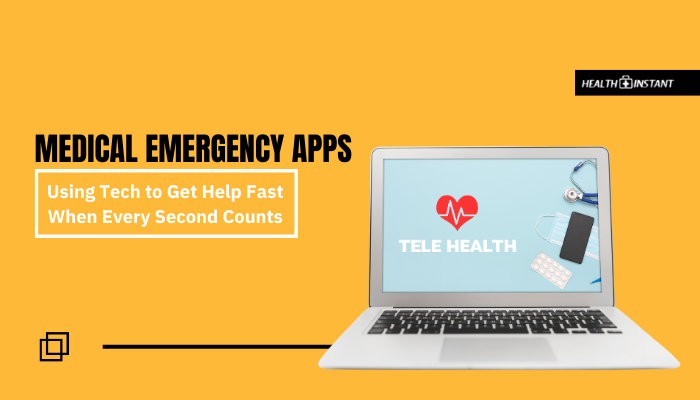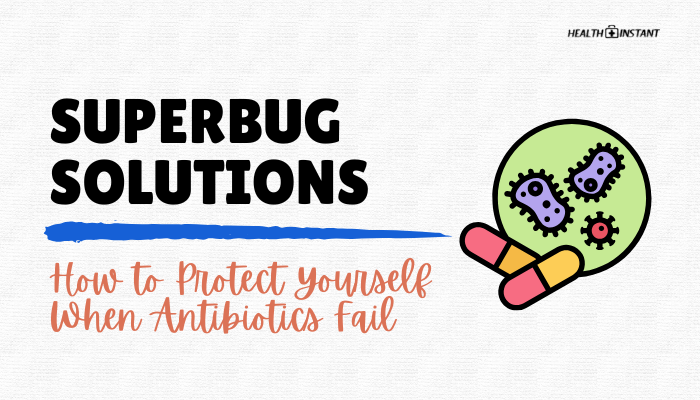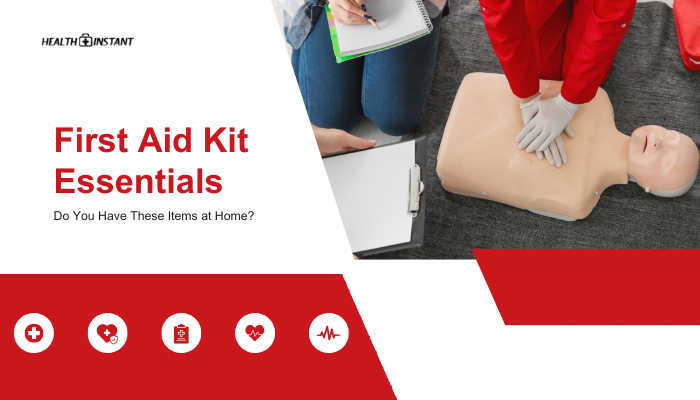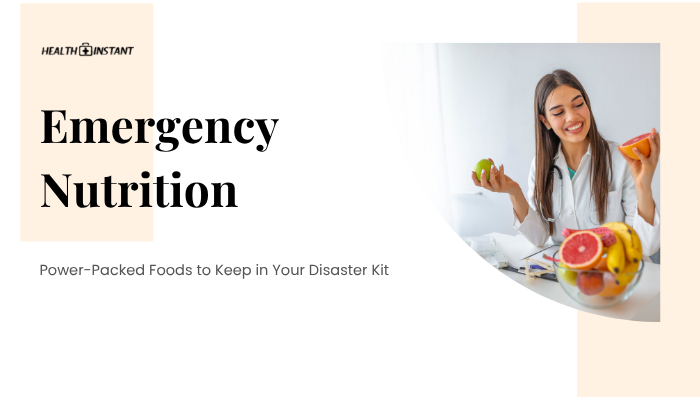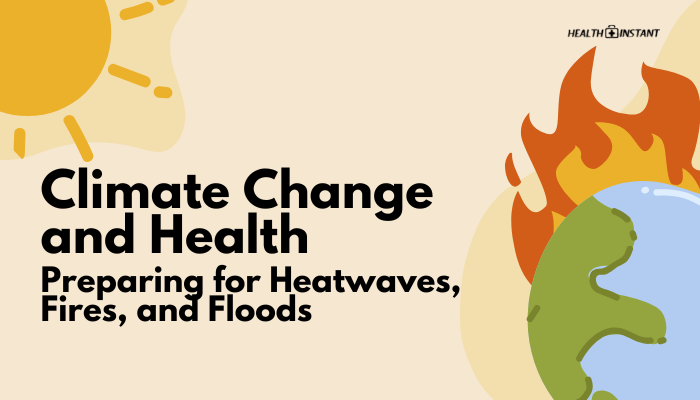Introduction
An urgent medical crisis can occur at any time—whether you are out for a jog, visiting a relative, or resting at home. In a dire moment, even a few seconds may influence survival. Modern smartphones and digital tools now make it possible to summon help quickly and share vital details with emergency teams.
Apps designed for medical emergencies connect individuals to responders, display instructions for first aid, and relay your location data to ensure assistance arrives rapidly. These capabilities can be especially beneficial when panic or confusion makes it difficult to communicate effectively.
This article explores how emergency apps use technology to expedite medical help. You will learn about core features such as one-tap calls to emergency services, real-time tracking, offline first-aid advice, and integrated health profiles. We will also discuss privacy concerns, essential setup steps, and helpful ways to incorporate these apps into daily routines.
By understanding which app capabilities match your personal needs, you can gain peace of mind knowing you are prepared for unexpected health crises. Whether you have chronic conditions or simply want extra security, medical emergency apps can become a vital resource when every second counts.
Why Medical Emergency Apps Matter
Speed of Response
Traditional emergency calls take several steps: you must dial the right number, state your name, provide a location, and describe the issue. In a panic, or if someone cannot speak clearly, getting accurate details to dispatchers can be difficult.
Apps that store medical information and contact details ahead of time help eliminate delays. With a single tap, you can alert both official emergency services and personal contacts. Many apps also share your geographic coordinates, which is critical if you cannot speak or do not know your exact location.
Personalized Medical Profiles
Every patient is unique. Quick reference to preexisting conditions, allergies, and medications allows first responders to provide fast, effective treatment. Mobile apps often store these details in a secure profile that can be accessed by scanning a code or checking a lock screen.
This feature matters if you are unconscious or unable to communicate. Comprehensive data about your medical background can spare precious minutes that might otherwise be spent gathering information from those around you.
Remote Guidance and First Aid Instructions
In many crisis situations—such as severe bleeding, choking, or cardiac arrest—immediate first aid can be a lifesaver before paramedics arrive. Some emergency apps give step-by-step instructions or video guides on administering CPR, handling open wounds, or assisting someone having an allergic reaction.
This can be critical if you are the only person available to help. Structured advice reduces guesswork and heightens confidence, increasing the chance of stabilizing the individual in distress.
Practicality and Accessibility
Smartphones are almost always within arm’s reach. Rather than remembering to carry specialized equipment, a well-designed emergency app places essential tools at your fingertips. This accessibility extends beyond just calling an ambulance. Many apps provide additional safety features—such as location tracking for family members, panic alarms, and short text alerts with your situation.
Busy caregivers, older adults, and people in remote areas all stand to gain from these capabilities. With good internet access, you can share data with hospital staff or even connect to telemedicine providers in seconds.
Types of Medical Emergency Apps
Not all medical emergency apps work the same way. Some focus on personal safety and easy 911 (or local equivalent) calling, while others offer advanced features like real-time tracking and in-app medical advice. Understanding a few broad categories can help narrow your choice:
- Dedicated Emergency Dialer Apps
- These apps streamline calls to emergency hotlines. A large, one-tap button dials the number, and some automatically send location information or a preset text message to contacts.
- They may include a straightforward medical ID screen with essential conditions (e.g., diabetes, epilepsy) that appear instantly to those assisting.
- These apps streamline calls to emergency hotlines. A large, one-tap button dials the number, and some automatically send location information or a preset text message to contacts.
- Personal Safety Apps
- They blend personal security features—like panic buttons or discreet SOS alerts—with medical crisis alerts.
- Ideal for individuals concerned about both crime-related dangers and health emergencies.
- They blend personal security features—like panic buttons or discreet SOS alerts—with medical crisis alerts.
- First Aid Reference Apps
- These apps act like digital manuals, offering text, images, or short videos demonstrating how to manage different crises.
- The best ones have offline access, allowing you to consult instructions even if you cannot connect to the internet.
- These apps act like digital manuals, offering text, images, or short videos demonstrating how to manage different crises.
- Integrated Health Profile Apps
- These platforms compile user health information—medical history, allergies, prescriptions—into a central location.
- Often, they have sharing features so you can quickly pass these details on to emergency personnel or hospital staff.
- These platforms compile user health information—medical history, allergies, prescriptions—into a central location.
- Wearable Companion Apps
- Designed to pair with smartwatches or wristbands that measure heart rate, oxygen levels, and sometimes detect falls.
- If a fall or irregular heartbeat occurs, the wearable triggers a notification on your phone or sends an alert to designated contacts.
- Designed to pair with smartwatches or wristbands that measure heart rate, oxygen levels, and sometimes detect falls.
The ideal option depends on your health conditions, lifestyle, age, and personal comfort with digital tools. Some individuals benefit from multipurpose apps that merge these categories, offering both emergency dialing and advanced data-sharing.
Core Features to Look For
App stores host hundreds of emergency tools. To find one that suits you, focus on a few key features that support speed and accuracy during a health crisis.
1. One-Tap Emergency Call
In a high-pressure moment, fumbling with your phone’s dialer or searching for a contact can waste time. A quality app places the emergency call button in a conspicuous spot, often on the home screen or as a widget. This ensures that even if you are anxious, you can quickly get through to responders.
- Auto Call: Some apps let you activate a countdown that automatically calls 911 if not canceled, useful for unsteady individuals who might pass out.
- Geofencing: If an app recognizes you are traveling abroad, it adjusts automatically to the local emergency number, removing guesswork in unfamiliar places.
2. Location Tracking and Sharing
When help is urgent, describing your whereabouts can be tough—especially if you are outdoors or in a place without clear landmarks. A reliable app uses GPS to pinpoint your position and shares it with the emergency operator or chosen contacts. Real-time tracking is beneficial when you need to move, as the responder sees your updated location.
- Automated Text Messages: Some apps attach a live map link to a text message or push notification for family members, who can track you until paramedics arrive.
- Indoor Positioning: A few advanced systems also attempt to track your location inside large buildings, but this technology remains less common.
3. Medical Profile and ID Display
Apps with a built-in medical ID show crucial details—like chronic conditions, allergies, or implanted medical devices—immediately on the lock screen or via a simple icon. Even if you cannot open your phone, first responders might tap “Emergency Information” on the screen.
- Medication and Allergy Lists: Provide specific drug names and reaction details.
- Contacts for Emergencies: Ensure you list individuals who can clarify your medical background or give additional information.
- Physician Details: You might include the name and phone number of your primary doctor or specialist.
4. First Aid Assistance
In remote places or when there is a delay in professional help, an app with first aid tutorials can enable immediate life-support steps. The content is typically short and direct, using bullet points and visuals. Guidance might cover:
- CPR for adults, children, and infants
- Handling severe bleeding, including how to apply direct pressure
- Using an automated external defibrillator (AED) if available
- Managing choking
- Recognizing and reacting to possible stroke or heart attack
5. Multi-Platform Support
Reliability is paramount, and ideally, your chosen app or service works on both Android and iOS, or even via a web browser. If multiple household members use different devices, they can still connect to the same system. Family-based location-tracking apps usually support cross-platform usage seamlessly.
Popular Examples of Medical Emergency Apps
Though new apps appear regularly, a few well-known options offer robust features. While availability varies by region, the following examples illustrate common functionalities that can benefit individuals seeking emergency readiness:
- ICE (In Case of Emergency)
- Highlights personal data on the lock screen, including blood type, medications, and emergency contacts.
- Allows multiple profiles for family members, so each person’s information can be stored in the same app.
- Highlights personal data on the lock screen, including blood type, medications, and emergency contacts.
- Red Panic Button
- Provides a single button that dials emergency services and sends a text with your GPS location to selected contacts.
- Flexible for travelers, with an option to add local emergency numbers.
- Provides a single button that dials emergency services and sends a text with your GPS location to selected contacts.
- Medical ID (Android)
- Displays a widget on your phone’s lock screen containing your essential health details.
- Easy editing for changes to medication or conditions.
- Displays a widget on your phone’s lock screen containing your essential health details.
- Life360
- Family-centered location tracking app that also includes an SOS feature for quick alerts.
- Helpful for parents tracking teenagers and older relatives who need closer monitoring.
- Family-centered location tracking app that also includes an SOS feature for quick alerts.
- MyID
- Offers a scannable QR code that first responders can use to access your medical profile.
- Works with companion bracelets or tags, making it ideal if your phone is locked or out of battery.
- Offers a scannable QR code that first responders can use to access your medical profile.
- American Red Cross First Aid
- Delivers first aid instruction for various emergencies in an offline format.
- Has quizzes and safety tips but does not directly call emergency services.
- Delivers first aid instruction for various emergencies in an offline format.
No single app covers all possible scenarios, and many people combine two or three to address different needs—such as location sharing, personal ID, and first aid. Check user reviews, regularly update the app, and confirm that all listed emergency phone numbers match your local services.
Setting Up Your Emergency App for Best Results
Step 1: Input Your Health Data Accurately
Take time to add correct information about your conditions, allergies, and current medications. Misspellings or out-of-date prescriptions can cause confusion in the heat of the moment. If you have a care plan or emergency instructions from a doctor, summarize them carefully. You might also include details about implanted devices—such as pacemakers—or relevant surgical history.
Step 2: Add Emergency Contacts and Customize Alerts
Identify one or two individuals who know about your health background, or who can convey crucial updates to medical staff. Ensure you:
- List each contact’s full name and phone number.
- Verify that the phone number is current.
- Add a secondary phone number (such as a work line or landline) if possible.
- Select whether alerts will be sent via text, app notification, or both.
Step 3: Enable Location Permissions
Your phone’s settings control whether apps can track your position. If you do not grant location access, the app cannot relay accurate coordinates. Most emergency platforms need permission set to “Always” or “While in Use” to function effectively. Keep in mind that extra location usage can affect battery life, so ensure your phone is charged.
Step 4: Test the App
A dry run helps you confirm everything works as expected. You might:
- Press the emergency button (without actually calling 911) to see if the app prompts a warning or countdown.
- Check whether your chosen contacts receive a test text with your location.
- Open the medical ID to confirm it displays the right data.
- Practice navigating the first aid section or instructions so you know how to retrieve them quickly in a crisis.
Step 5: Keep the App Updated
Developers often release updates that fix bugs, add new emergency numbers, or improve speed. Turn on automatic updates or check regularly in your app store. Also update your personal info if you get a new phone number, begin new medication, or experience significant changes in your health.
Integrating Emergency Apps with Wearables
Wearables—such as fitness trackers or smartwatches—add another layer of safety by continuously monitoring data like heart rate, movement, and sometimes oxygen saturation. If the device detects an abnormally high or low heart rate, you might receive a prompt on your watch to confirm whether you need help. Advanced wearable-linked apps can take further steps:
- Fall Detection
The watch senses a sudden impact, then asks if you are okay. If there is no response, it notifies emergency contacts or triggers a call. - Heart Rate Alerts
Some users set custom thresholds so if their heart rate goes beyond safe levels for too long, the app suggests seeking help. - Medication Reminders
Notifications for daily pills appear on the watch. This reduces the risk of missing critical doses.
Though these features can be beneficial, they rely on accurate sensors, a charged battery, and stable connectivity to a smartphone or a mobile network. If you prefer to rely on a wearable for emergency detection, confirm that it is compatible with your chosen phone app and that you have granted any necessary permissions.
Data Privacy and Security Concerns
Sharing medical details and GPS location raises legitimate questions about privacy. Responsible app developers use encryption, secure servers, and minimal data collection to protect users. Even so, you should still approach the process with caution:
- Review the Privacy Policy
Understand how your information is stored and whether the company shares data with third parties. Search for language about encryption, data retention, and user consent. - Use Strong Passwords
If the app offers an account-based system or online dashboard, pick a unique password. For added security, consider activating two-factor authentication if available. - Limit Sensitive Details
Provide only what is needed for emergency responders (e.g., not your full medical record with extraneous items). Instead, focus on conditions, allergies, and key procedures relevant to immediate treatment. - Check Developer Reputation
Go for apps from recognized health organizations, the Red Cross, or reputable tech firms. Watch out for apps with few reviews or unclear developer information. - Location Control
If you only need location-sharing during an emergency, see if the app offers a quick toggle to turn location tracking on or off. This approach prevents constant background surveillance.
Balancing convenience and privacy is personal. In general, providing essential data can save precious minutes when medical professionals must make swift decisions. However, always confirm that any app you use follows basic security standards.
Special Considerations for Older Adults and Individuals with Chronic Conditions
Seniors Living Alone
Emergency apps can be especially important for older adults who live independently. A basic phone call may not be feasible if someone falls and cannot reach the phone. Programs with voice-activated or wearable triggers close that gap. Family members might install location-tracking apps, ensuring they can locate a parent who wanders or becomes disoriented.
- Fall Detection Systems: Some solutions combine smartphone apps with wearable pendants or watch straps that detect sudden movements.
- Automatic Emergency Alerts: The app calls emergency services automatically if no user interaction occurs during a fall alert.
People Managing Cardiac Disease, Asthma, or Diabetes
Those with known conditions need quick ways to share critical data about typical baseline vitals, current medications, and potential triggers.
- Regular Data Uploads: Some apps integrate with glucometers or Bluetooth blood pressure cuffs, enabling real-time updates. If readings spike or drop alarmingly, an alert might prompt a user to seek help.
- Medication Reminders: Timely dosing reminders prevent lapses that might escalate into crisis.
- Action Plans: An “action plan” section could indicate what to do if a user experiences chest pain, hypoglycemia, or a severe asthma attack.
Caregiver Access
Caregivers can also maintain oversight via an app that logs symptoms or notifies them if the patient’s device triggers an alert. In such setups, the caregiver can see:
- The user’s last known location.
- Current vital signs data (if the wearable or device monitors them).
- When the user took medications or if a dose was missed.
Using Medical Emergency Apps While Traveling
International travel can complicate emergencies if you are unfamiliar with local numbers or do not speak the language. Certain apps simplify the process:
- Global Emergency Number Databases
Some apps automatically detect your location and route emergency calls to the nearest service. This is crucial in areas without a standard 911 system. - Translation Tools
A few platforms offer basic translations or phrases that describe urgent health needs, bridging language barriers when contacting local paramedics. - Offline Maps
If you cannot access cellular data, the app’s offline map feature can help you identify the nearest hospital or pharmacy.
Before you travel, verify that your emergency app of choice updates contact details in the region you plan to visit. Double-check coverage with your mobile network to ensure you can still send location data and place calls outside your home country.
Practical Tips for Getting the Most Out of Your Emergency App
- Keep Your Phone Charged
Emergency apps are useless if the battery runs out. Consider a portable charger or battery case if you spend long hours away from power sources. - Create a Visible Shortcut
Place the app icon on your home screen or enable a widget. Quick access matters in urgent moments. - Discuss It with Family
Let loved ones know which app you rely on, so they can respond promptly if they receive a location alert or phone call. - Teach Others
If a friend or relative often helps you with daily tasks, show them how the app works. They might need to open it if you are incapacitated. - Regularly Update Medical Info
As soon as you start or stop a medication, log in and edit your profile. The same goes for any changes in allergies or major surgeries.
Future Trends in Medical Emergency Apps
Technology is evolving quickly, and future emergency apps may do even more to safeguard health:
- Artificial Intelligence Integration: AI-driven chatbots could assess your symptoms through conversation, then suggest whether to call an ambulance.
- Wearable Bio-Sensors: Real-time continuous monitoring of blood pressure, oxygen saturation, and heart rhythms might anticipate emergencies before they occur.
- Drones for Rapid Response: In some areas, drones transport lightweight emergency equipment like AEDs. Apps may coordinate and direct these drones using GPS data from the caller’s phone.
- Multi-Language Real-Time Translation: Advanced translations could allow dispatchers and callers to communicate effectively, even if they speak different languages.
- Smart Home Integration: Voice-activated systems can link to emergency apps. Phrases like “Call for help!” might trigger both an ambulance call and alerts to designated contacts.
Adoption will depend on data security, regulatory approvals, and usability. Still, these possibilities highlight how technology can further reduce delays in emergency care.
Common Misconceptions
- “I Do Not Need an Emergency App Because 911 Is Enough.”
In some cases, just dialing 911 might suffice. However, an app that auto-shares your location or essential medical data can expedite treatment—especially if you cannot speak or provide information. - “Apps Are Only for People with Chronic Illnesses.”
Even individuals with no known conditions can face sudden accidents or unexpected health issues. An app benefits anyone who wants quicker, more efficient responses. - “Emergency Apps Drain the Phone Battery All the Time.”
Although using GPS can affect battery life, many apps optimize usage so it only updates location data during an alert or a short monitoring window. - “First Aid Apps Replace Professional Treatment.”
These apps can guide immediate actions, but they do not replace medical services. Their role is to stabilize or relieve symptoms until professional help arrives.
Conclusion
Medical emergency apps offer a bridge between calling for help and receiving professional treatment. By enabling precise location sharing, storing essential health details, and providing first aid guidance, these digital tools make it faster and easier for paramedics or loved ones to respond during a crisis.
Features like one-tap calling, real-time tracking, and offline instructions help you navigate stressful situations more effectively. Regardless of whether you manage chronic conditions or want peace of mind for potential mishaps, a well-chosen app can be a valuable safety net.
To get the most from these apps, invest time in setting them up properly: fill in medical details, add reliable emergency contacts, and enable relevant permissions. Make sure you also keep your phone charged and updated.
Explain the app’s function to friends or family so they can assist if you lose consciousness or become confused. By pairing proactive preparation with modern technology, you can greatly improve your odds of receiving life-saving help when seconds truly matter.
References
- World Health Organization. Emergency care systems for universal health coverage: ensuring timely care for the acutely ill and injured. WHO Publication. 2019;1(1):1–24.
- United States Department of Health and Human Services. Strengthening telehealth and digital health for emergency care. HHS Report. 2020;3(2):10–17.
- Lin S, Hu M, Wang Z, et al. Mobile health applications in emergency settings: a systematic review. BMC Emerg Med. 2021;21(1):87–94.
- American Red Cross. Guidelines for using first aid and safety apps. Red Cross Resource. 2022;2(4):11–19.
- Merchant RM, Topjian AA, Panchal AR, et al. Digital strategies for improving bystander CPR. Circulation. 2020;142(4):36–43.
- Alghamdi SM, Ghamdi MA. Technology integration in prehospital care: The role of smartphone apps. J Emerg Med. 2018;54(3):383–389.
- Nelson BK, Brown DF. Emergency smartphone features for patient safety. Am J Emerg Med. 2019;37(6):1160–1166.
- Kontos E, Blake KD, Chou WS, Prestin A. Predictors of eHealth usage: Insights on the digital divide from the health information national trends survey 2012. J Med Internet Res. 2018;16(7):e172.
- Glick AF, Farkas JS, Nicholson J, et al. Parental use of telehealth for pediatric care: a systematic review. Pediatrics. 2019;143(3):e20181757.
- Hugelius K, Adolfsson A, Gifford M, Ortenwall P. Digital tools as promoters for person-centered emergency care in remote areas. Rural Remote Health. 2020;20(3):6062.
- American Heart Association. Emergency cardiovascular care guidelines. Circulation. 2021;144(1):e76–e89.
- European Society of Cardiology. Mobile app use for chronic disease management. Eur Heart J. 2020;41(3):232–239.

